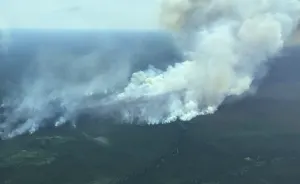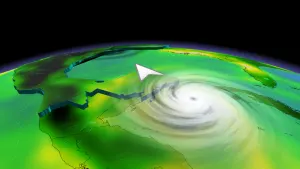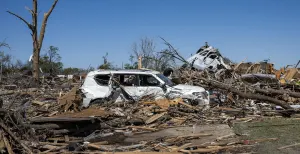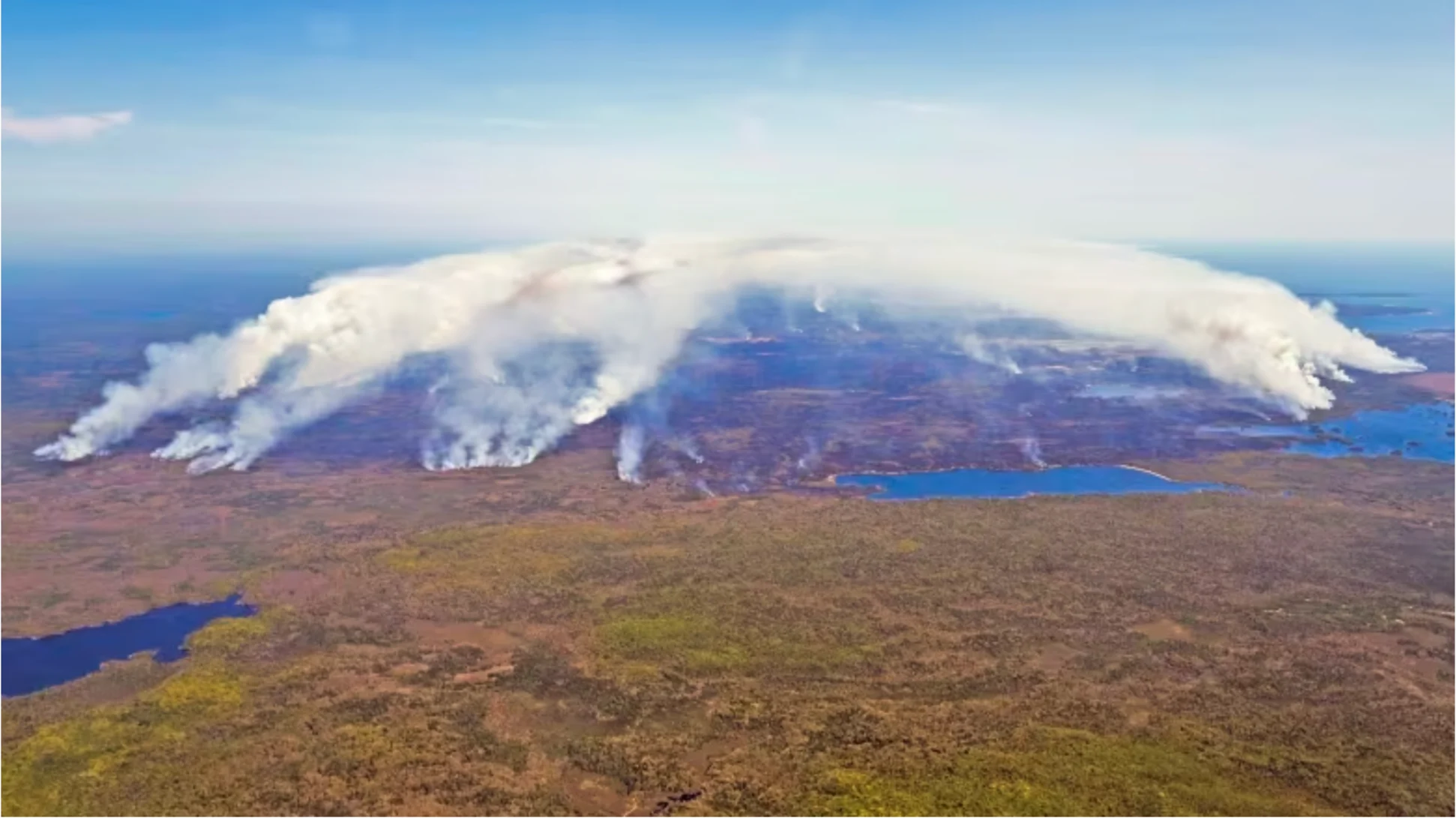
Southwest Nova Scotia fires have grown; more resources on the way
Visit The Weather Network's wildfire hub to keep up with the latest on the active start to wildfire season across Canada.
Two out-of-control wildfires in Shelburne County in Nova Scotia's southwestern region have continued to grow as firefighters face a scorching day battling the blazes.
The biggest fire started in Barrington Lake in Shelburne County on Saturday and is now estimated to cover 20,000 hectares, up from Wednesday's estimate of 17,185 hectares.
The forest fire is the largest one in Nova Scotia's recorded history, and has destroyed at least 50 homes and cottages.
Crews are working in blazing hot conditions, with temperatures expected to rise to 32 C.
"Today's weather is not going to be a friend of the firefighters," Natural Resources Minister Tory Rushton told the CBC's Information Morning Nova Scotia on Thursday.
Firefighters have reported seeing flames nearly 100 metres tall.
More firefighting crews and equipment are expected to arrive in Nova Scotia after Ottawa approved a request from Premier Tim Houston for more resources. Federal Public Safety Minister Bill Blair announced the support Thursday morning in Ottawa.
The Canadian Armed Forces will provide planning and co-ordination support, as well as firefighters and fire specialists to help control the blazes. The firefighters will be used to relieve crews who have been working on the ground for days.
"They're doing an extraordinary job, but quite frankly they need help. They need relief and they need additional resources," Blair said. "That is a particularly dangerous fire and we're very concerned that it actually threatens a number of communities and other critical infrastructure in southern Nova Scotia, and so we'll move as quickly as possible to bring them that relief.".

The fire in Shelburne County has surpassed 18,000 hectares and is now believed to be largest wildfire in recorded N.S. history. (Communications Nova Scotia)
Province may bring in modular housing
Housing Minister John Lohr told reporters Thursday the province is considering bringing in modular houses — likely prefabricated homes that are transported to a location on a truck and then hooked up to water and sewer connections — to help alleviate the need for temporary housing in the southwestern region.
"Obviously when the fire is out, the housing situation there will be a big concern. We know there isn't really the local trades and infrastructure there to the extent that will need to be there to address the losses."
The homes could also be brought to the areas near Halifax where fires have displaced people, Lohr said.
Manufacturers have already contacted the government to let it know they have units available, and Lohr said he hopes the homes could be delivered in "weeks not months."
Barrington Lake fire
More than 38 firefighters from the Department of Natural Resources (DNR) are on the scene, as well as 40 from volunteer and municipal departments.
As of Wednesday, more than 2,300 homes had been evacuated in the Shelburne County area, according to RCMP Chief Supt. Sue Black, displacing about 5,000 people.
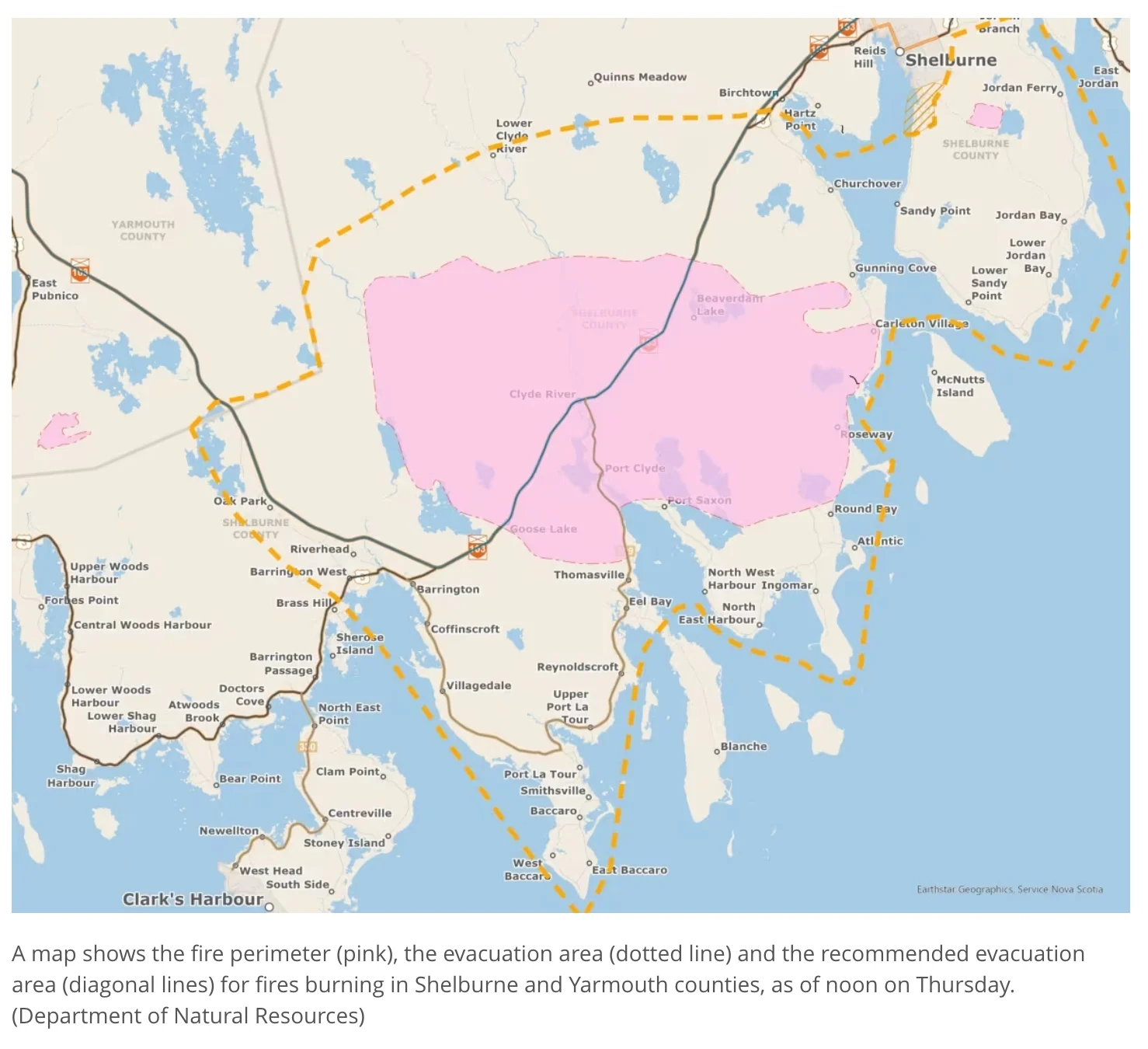
Mandatory evacuation orders are in place for all communities from Port Clyde through to Baccaro and along Highway 309 to the intersection of Oak Park Road and Highway 3 in Barrington West, and from 800 Upper Clyde Rd. to 2461 Upper Clyde Rd.
Residents of Barrington who have been evacuated are being asked to check in at 902-637-7899.
Residents of the Municipality of the District of Shelburne who have left their homes are asked to check in with the municipal office at 902-875-3544, extension 245, to let officials know they are safe and out of the fire zone. Anyone who needs help with the evacuation can call 902-875-8407.
All schools in Shelburne County are closed Thursday and Friday.
WATCH: Road collapses as wildfire rages in Shelburne County, N.S.
Fire near town of Shelburne
Another forest fire outside the town of Shelburne near Lake Road has grown to 120 hectares, up from an estimate of 20 hectares when it was reported on Wednesday evening.
Twenty-three firefighters from DNR are on the scene.
"Last night we got scared because the fire was getting very close to the town," said town Mayor Harold Locke on Thursday afternoon, adding that the water treatment facility was in the vicinity of the fire but was not affected.
"They are gaining on that. They haven't got it totally under control, but they are gaining."
Locke said the small town of 1,600 is coming together to help each other with donations and offers of assistance. About 100 people stayed at an evacuation centre in the town on Wednesday night, he said.
A mandatory evacuation order for civic addresses 1518 Lake Rd., through to Jordan Bay, and from 674 Sandy Point Rd., through Lower Sandy Point, Jordan Bay, and Jordan Ferry to the Jordan Branch Road. Jordan Branch Road remains open.
To exit the Sandy Point Peninsula, residents are advised to exit through Sandy Point to avoid heavy smoke conditions through to Jordan Ferry.
There is an evacuation recommendation in place for 243 Sandy Point Rd. to 650 Sandy Point Rd., including Roseway Park, School Street, Commission Street, Harbourside Landing, Mayflower Road (the old boys' school), Shelburne Diesel, Shelburne Ship Repair, Ven-Rez, Bill Harris Transport, Coastal Trails, Adamant Drive, and Lake Road up to civic address 1536.
Evacuees are asked to register with the Canadian Red Cross at 1-800-863-6582.
Patients have been evacuated from Roseway Hospital in Shelburne, according to Nova Scotia Health, and the site is closed.
Fifteen patients have been transferred to South Shore Regional Hospital in Bridgewater and Fishermen's Memorial Hospital in Lunenburg. Others were transferred to hospitals both inside and outside the western zone or discharged.
Nova Scotia Health also announced that the Roseway Hospital emergency department will be closed and services at the site will be cancelled until further notice.
The Roseway Manor nursing home has also been evacuated, and a mandatory evacuation order for east of 2794 Highway 3, Barrington, is in effect, which includes all of Oak Park Road and Factory Hill Road until the Shelburne County line.
WATCH: Top 5 ways humans cause forest fires in North America
Yarmouth County fire
A wildfire burning east of Lower East Pubnico in neighbouring Yarmouth County is still burning out of control but is still estimated to be 163 hectares as of Thursday morning. DNR said Thursday 20 firefighters from the department are on scene as well 10 firefighters from volunteer and municipal forces.
Dave Rockwood, a spokesperson for DNR, said Thursday afternoon firefighters were able to save two structures in the area, stopping the fire within just 20 centimetres of the buildings.
Air and heavy equipment resources, including eight air tankers from New Brunswick and two water bombers from Newfoundland and Labrador, are being co-ordinated between the three wildfires in Shelburne and Yarmouth counties, says a news release from DNR.
Evacuation and comfort centres
Several centres have been set up to provide safe places for evacuees:
Shelburne Community Centre: 63 King St., Shelburne.
Sandy Wickens Memorial Arena: 12 Park Lane, Barrington.
Yarmouth Fire Hall: 221 Pleasant St., Yarmouth.
Canada Games Centre: 26 Thomas Raddall Dr, Halifax.
This article was originally published for CBC News. Contains files from Information Morning, Michael Gorman and Frances Willick






